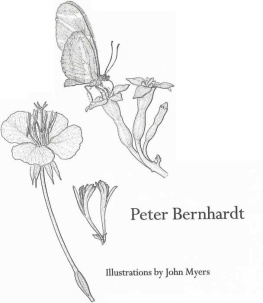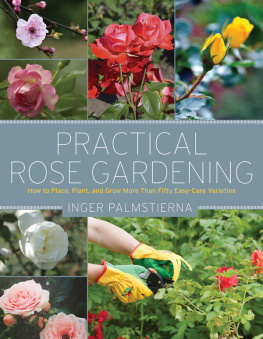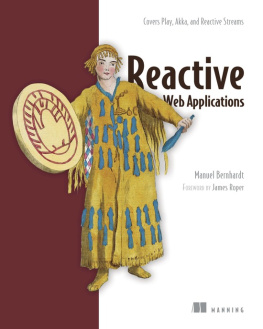Peter Bernhardt - The Roses Kiss
Here you can read online Peter Bernhardt - The Roses Kiss full text of the book (entire story) in english for free. Download pdf and epub, get meaning, cover and reviews about this ebook. genre: Home and family. Description of the work, (preface) as well as reviews are available. Best literature library LitArk.com created for fans of good reading and offers a wide selection of genres:
Romance novel
Science fiction
Adventure
Detective
Science
History
Home and family
Prose
Art
Politics
Computer
Non-fiction
Religion
Business
Children
Humor
Choose a favorite category and find really read worthwhile books. Enjoy immersion in the world of imagination, feel the emotions of the characters or learn something new for yourself, make an fascinating discovery.
- Book:The Roses Kiss
- Author:
- Genre:
- Rating:4 / 5
- Favourites:Add to favourites
- Your mark:
- 80
- 1
- 2
- 3
- 4
- 5
The Roses Kiss: summary, description and annotation
We offer to read an annotation, description, summary or preface (depends on what the author of the book "The Roses Kiss" wrote himself). If you haven't found the necessary information about the book — write in the comments, we will try to find it.
The Roses Kiss — read online for free the complete book (whole text) full work
Below is the text of the book, divided by pages. System saving the place of the last page read, allows you to conveniently read the book "The Roses Kiss" online for free, without having to search again every time where you left off. Put a bookmark, and you can go to the page where you finished reading at any time.
Font size:
Interval:
Bookmark:

A SHEARWATER BOOK
The Roses Kiss
The Rose's Kiss
A Natural History of Flowers

ISLAND PRESS / Shearwater Books
Washington, D. C. Covelo, California
A Shearwater Book
published by Island Press
Copyright 1999 Peter Bernhardt
All rights reserved under International and Pan-American Copyright Conventions. No part of this book may be reproduced in any form or by any means without permission in writing from the publisher: Island Press, 1718 Connecticut Avenue, NW, Suite 300, Washington, DC 20009.
Shearwater Books is a trademark of The Center for Resource Economics.
Caption for title page illustration can be found on page 154.
Library of Congress Cataloging-in-Publication Data Bernhardt, Peter, 1952
A natural history of flowers / Peter Bernhardt.
p. cm.
Includes bibliographical references.
ISBN 1-55963-564-9 (alk. paper)
1. Flowers. 2. Plant ecology. I. Title.
QK653.B45 1999
582.13dc21 99-21386
CIP
Printed on recycled, acid-free paper
Manufactured in the United States of America 10 9 8 7 6 5 4 3 2 1
For my wife, Linda.
You were always a rose.
The Roses Kiss
A Natural History of Flowers
The rose, I sang, is either red or pale,
Like maidens whom the flame of passion burns,
And love or jealousy controls, by turns.
Its buds are lips preparing for a kiss;
Its open flowers are like the blush of bliss
On lovers cheeks
Bayard Taylor, Hassan Ben Khaled
Beyond the Florists Shop
Fresh flowers accompany us through some of the most emotional moments of our lives. High school students give and receive corsages before the prom. Courtships, weddings, and anniversaries must have their bouquets. Mourners hope that floral tributes and wreaths will lend grace to a funeral and help ease the immediate burden of grief.
As we grow more affluent, flowers often help define the quality of our lives. The more land we own around our house, the more likely we will be to garden with an eye for the most opulent colors and a nose for the richest scents. Inside the home, vases and ceramic pots contain revolving displays of blossoms independent of climate, season, or the plants natural geography.
In his provocative book The Culture of Flowers, Jack Goody, a professor of anthropology at the University of Cambridge, discusses the complex relationship between fresh flowers and old religions. Some houses of worship will never admit a bouquet because its priests regard flowers as metaphors for frivolity, sensuality, and luxury. They may even associate flowers with the sinful practices of infidels and foreign cults.
Conversely, there are sects that embrace flowers as symbols of joy, renewal, and generosity and the purest evidence that there is a benevolent Creator. Holy days and worship services are incomplete without flowers. Public and private acts of devotion often include the decoration of a beloved shrine or altar with flowers and the replacement of blooms as soon as they droop or show signs of decay.
In most societies, food starts with a flower. There is the immediate evidence of cauliflower, broccoli, and the many fruit and nut crops, but then the role of flowers grows more subtle. The contents of our toasters, pasta platters, and cereal bowls have all been manufactured by the flowers that belong to a limited number of species in the grass family (Poaceae). Few of us notice the activity of the tiny, short-lived flowers on corn tassels and wheat stalks, but there would be no edible grains without them. Almost all animals raised for food, including farm-raised catfish, are now fattened on a diet of such grains mixed with soybeans, and all soy products start with clusters of nodding, creamy flowers fluttering in the spring breeze.
If flowers feed the population of the United States and inspire its culture, why do Americans seem so intent on driving them out of science classrooms as the twentieth century comes to a close? As a university professor, I am in an ideal position to see the lack of attention given to the science of plants. Biology teachers at high schools in New York have told me they have eased botany out of the syllabus because it bores their students. Teachers at primary schools in St. Louis say theyve covered botany for the year with a days field trip to the Missouri Botanical Garden. When teachers do perform their jobs, parents may try to spare their children a botanical ordeal. Mothers look up my name in the university directory and ask me to
design their kids projects or provide them with literature. If you dont send my son any information, he may have to go to a library, said one concerned mom.
Do not assume that botanical education improves when a young scholar enters college. At most urban campuses, many students registering as biology majors believe that a bachelors degree in biology is merely the first step toward medical school. They tend to approach plant science with resentment, convinced that their time would be better spent on subjects that will appear on the Medical College Admission Test. Unfortunately, some universities cater to this phobia. For example, a recent educational report trumpeted the modernization of a general biology course at a prominent university in Ohio. The major improvement seemed to be an afternoon laboratory class that no longer forced students to learn the life cycle of the liverwort. At Saint Louis University, the number of courses in plant science required for a bachelors degree in biology was recently halved (my fellow professors revised the curriculum while I was out of the country).
Need a college student aiming at a career in law, the arts, business, or the media ever take a course in plant life? Universities in the United States insist that all students working toward any degree in the liberal arts take one or two science courses. The problem is that larger campuses tend to offer a self-serve buffet of well-diluted subjects. Yes, there is often a Plants for Poets course, but it must compete with such other flimsy constructs as Animals for Accountants, Weather for the Weary, Molecules for the Masses, and the ever popular Rocks for Jocks.
Some critics insist that public disinterest in plant science is a consequence of botanists turning the discipline into a fortress of jargon. Botanists have made the field inaccessible to bright minds, they say, by complicating it with a ponderous terminology based on the reinvention of dead languages. Thats possible, but then how can the
publics love of medicine be explained? The terminology of medical science is much more complex, but the obvious success of the publishing and entertainment industries shows that people are enthralled with the most technical aspects of the human body.
Ironically, botany and medicine enjoy a common origin, and both disciplines still share bits of Greek and Latin. Of course, the two fields may use the same word in very different ways. The ancient Greeks thought that the bulblike underground organs of wild orchids (Orchis) resembled paired testicles. Therefore, when a modern surgeon recommends an orchiectomy, the patient receives a surgical castration, not a corsage.
We seem more willing to learn unfamiliar words if they pertain to our personal health. Most educated people could probably manage a brief definition of such words as diabetes, insulin, and pancreas. The days when a family doctor could hide the seriousness of an illness from family members by lapsing into medical terminology are over, and thats a good thing. Why, then, do people recognize the medical word pancreas (Greek, three syllables) more readily than the botanical word corolla (Latin, three syllables)? Clearly, both human and plant organs ultimately influence some aspects of our lives.
Next pageFont size:
Interval:
Bookmark:
Similar books «The Roses Kiss»
Look at similar books to The Roses Kiss. We have selected literature similar in name and meaning in the hope of providing readers with more options to find new, interesting, not yet read works.
Discussion, reviews of the book The Roses Kiss and just readers' own opinions. Leave your comments, write what you think about the work, its meaning or the main characters. Specify what exactly you liked and what you didn't like, and why you think so.











